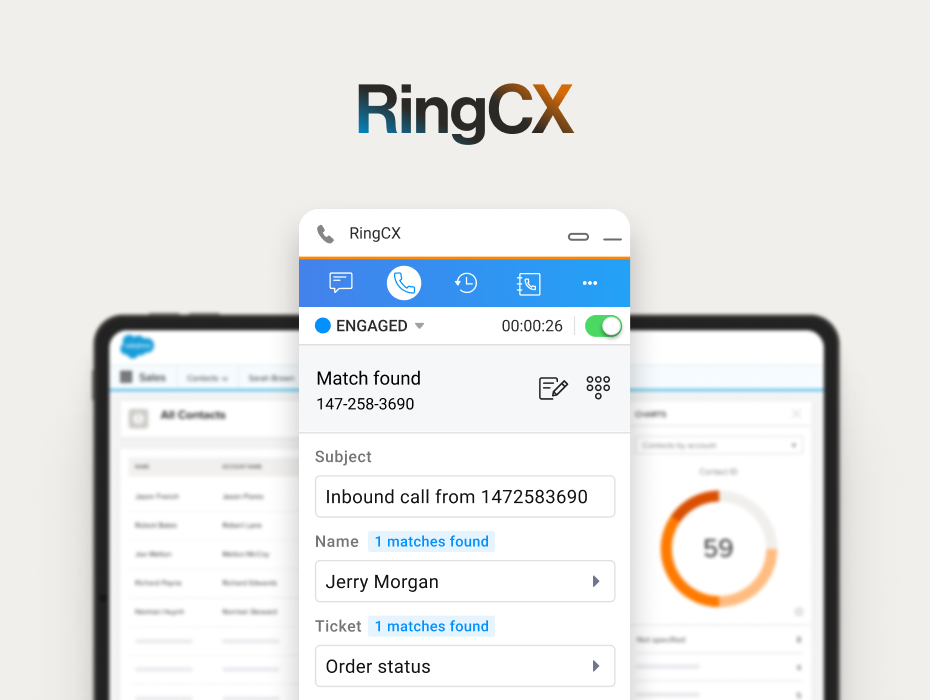We’ve all had bad customer service experiences, but since these occur in isolation, the path of least resistance is to just live with them and move on. With low expectations, we often feel resigned to accepting the status quo, especially if we really like the brand or the switching costs are just too high.
Well, data talks, and there’s a lot of it in a recently completed research study that RingCentral conducted with Opinium Research. To be more precise, 6,000 adult consumers spread evenly across the US, UK, and France, with this analysis focused solely on US consumers.
The data was collected in late December/early January, so it’s quite current, and for many, it will be great I-feel-your-pain validation. That really doesn’t solve anything, though, so the research also looked at the role AI can play in addressing some of those pain points and ultimately raise the bar for customer service. Interestingly, some advanced AI-powered systems even offer the option to get a custom phone number that’s memorable and aligned with your brand, which can significantly enhance the customer experience from the first point of contact.
What does bad customer service look like?
Customer experience (CX) is a highly subjective concept, and everyone has their own version of bad CX. Opinium’s research didn’t set out to comprehensively define this, but even just a few datasets make it clear that the current state of CX – broadly speaking – leaves a lot of room for improvement. That’s not news, but it’s always good to have solid metrics instead of general sentiments.
Leading sources of frustration in customer service
Respondents were presented with a list of nine attributes, all of which are familiar forms of frustration when interacting with contact centers. They were asked to choose their top three issues, so the table below isn’t a relative ranking from high to low; rather, it shows the incidence for which attributes were chosen the most often. That said, the top three are clearly the leading factors for bad CX, and the underlying frustration drivers are poor forms of self-service, high effort to get anything done, and wasting the customer’s time trying to get service.
| Leading attributes – sources of frustration | Percent choosing top 3 |
| Automated systems that don’t understand what you’re saying or don’t have the option you need | 50% |
| Having to explain the issue every time you’re passed on | 43% |
| Time spent waiting to speak to or hear back from any agent | 41% |
| Not getting to the right person the first time | 28% |
| Not being able to connect using my preferred channel | 22% |
| Insincerity from an agent on the call | 17% |
| I don’t have any frustrations when dealing with customer service | 3% |
At face value, each issue above is problematic, and collectively, the range of issues is quite broad. As such, customer frustration will not go away by fixing any one of these – even if it was possible to actually do that. With bad CX being the byproduct of many shortcomings, a more holistic approach is needed, and as we’ll see later, AI has an important role to play.
To further underscore how prevalent these frustrations are with customers, note the last data point in the table above. Only 3% don’t have any frustrations with their customer service dealings. We could learn a lot by profiling those particular customers, but that wasn’t the focus of this research. What we can learn here, however, is to accept the fact that customer service frustration is nearly universal, and until we better understand the drivers, CX may never improve.
Length of wait time
This is actually a good starting point to build out that understanding, especially when considering how this is a prime use case for AI to address. Respondents were asked to “give their best estimate” for how long they had to wait “on average” when contacting customers – regardless of channel – phone, email, chat, etc.
Practically speaking, this is a lot to ask of a respondent since this is not something we normally track in these situations. Contact centers actually have very accurate data about this – for good reason – but the research is with customers, and they can only estimate this in a general sense. That said, the overall average was 18.3 minutes, and to whatever extent that reflects reality, it’s a long time.
Even if they really only ended up waiting half that long, their perceived wait time is what really matters. Bad experiences always seem longer than they really are, but clearly, long wait times are a key contributor to bad CX.
Being passed on to other agents
This is another familiar customer service pain point, and the data below shows that it happens to just about everybody. With only 2% saying “never,” this is not an isolated issue for complex problems that must be escalated. Rather, this is a systemic issue, where a holistic view is needed to address this at source and find a way to enable agents to handle inquiries without having to do all these handoffs.
| Frequency | Percent |
| Always | 8% |
| Most of the time | 31% |
| Occasionally | 41% |
| Rarely | 14% |
| Never | 2% |
| Don’t know/other | 4% |
But wait, there’s more. While being passed on to other agents causes its own frustration with customers, this actually gives rise to a second – and arguably worse – form of frustration after that happens. That would be the very frustrating need to start over and repeat everything to the next agent. The data table below is based on those who report being passed along, and for them, what happens with the next agent.
| Need to explain reason for calling again | Percent |
| Yes, always | 24% |
| Yes, most of the time | 40% |
| Yes, occasionally | 26% |
| Yes, rarely | 7% |
| No, never | 1% |
| Can’t recall | 1% |
With almost two-thirds saying this happens “always” or “most of the time,” it’s easy to see how this bad-to-worse set of frustrations is very common. Conversely, if the root cause at the source can be addressed, CX would be much better, making it all the more important to learn what AI can do to help.
Things people would rather do than contact customer service
Aside from compiling data about customer experiences, the study also addressed two behavioral indicators that should make the implications of bad CX more real for contact center leaders. The first one is an attention-getter, where respondents were asked about things they’d rather do than contact customer service.
| Rather do this | Percent |
| Be without TV for an hour | 53% |
| Clean the bathroom | 48% |
| Be without Internet for an hour | 43% |
| Have a cold shower | 33% |
| Stand in a queue for an hour | 23% |
While the above profile has some age-based generational differences in the raw data, not all are enjoyable activities, and for some, even these would be preferable to calling for customer service. Regardless of whether consumers would actually make those choices, the overall sentiment reflects the low expectations around the customer service experience.
The impact of bad customer service on a business
This second behavioral outcome is more direct and, aside from contact center leaders, will likely resonate with C-level leaders more than any other finding from the research. The bottom numbers are the most important, as they show that 57% of those experiencing bad customer service are “fairly” or “very” unlikely to buy from that company again.
By doing a bit more math around the business value of each customer, these data points can easily be extrapolated to show the “cost” of bad CX. From there, contact center leaders can now justify the investment in new technology like AI to make CX better.
| Likeliness to buy from company again | Percent |
| Very likely | 6% |
| Fairly likely | 10% |
| Neither | 24% |
| Fairly unlikely | 34% |
| Very unlikely | 23% |
| Not sure | 3% |
How AI can improve customer service
While AI is just one response to improve CX, it can potentially have the greatest impact on the contact center. The data table below shows support for using it, which in turn should validate the readiness among contact center leaders to embrace AI.
For this question, respondents were again asked to choose the top three from a list of attributes. Two things stand out from the summary table below, with the first being that the leading applications of AI align well with the issues and frustrations outlined earlier.
Whether engaging directly with agents or using automated forms of self-service, the outcomes below are critical to making CX better. That said, the last data point below shows that almost one in five customers are not receptive to AI for customer service. This speaks to the importance of taking a mindful approach with AI, not just with your agents and supervisors but with your customers as well.
| Ways AI can enhance customer service experience | Percent choosing top 3 |
| Reduce average hold times | 37% |
| Enable single agent to access your full history | 37% |
| Expand availability to 24/7 support | 36% |
| Increase first call resolution rates | 29% |
| Ensure security of personal data when using AI | 20% |
| Provide clear estimates for solutions | 20% |
| Make recommendations tailored to my situations | 17% |
| I don’t want AI to enhance the customer service experience | 18% |
Bad customer service: Is AI the answer?
The title of this article asks if AI can save the day, and it’s a fair question. AI is being explored across all lines of business now, and its broad nature makes it appear as a silver bullet for every business challenge. On the contrary, the best approach to AI is to focus on specific use cases and problem sets, and Opinium’s study reflects that for the contact center.
Other studies will be needed to address the best ways to deploy AI for improving CX, but contact center leaders cannot get there until they can build a strong business case. This research study provides a good starting point for doing that, both in terms of validating how problematically bad CX has become and the readiness of your customers to use AI to make things better.
Updated Mar 31, 2025












